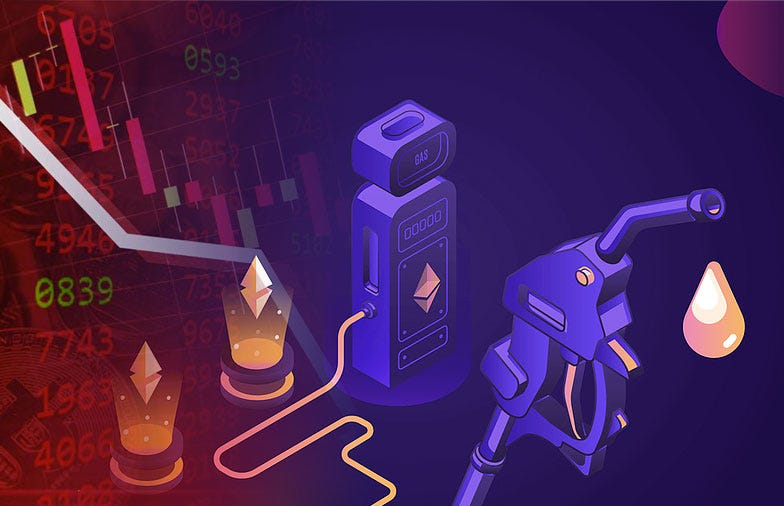Understanding Blockspace and Gas on Ethereum
With Ethereum planning for a system upgrade slated for Q1/Q2 of 2022, the Achille’s heel of the network currently is the demand for blockspace. Blockspace is the term used for the data you want to be stored on the network. This can be many things such as Ethereum tokens or other ERC-20 tokens, but more recently, Non-fungible tokens (NFTs) have become more prevalent in demand for blockspace.
But what is Blockspace as a concept?
When someone interacts with Ethereum, they usually have a vital piece of data to be stored. Usually, this data is a transfer of value or ownership of a token. The blockchain functions as a giant public ledger book, and when that data is written to the chain, miners have to fill up each new block with the data. Each block has a limited amount of space, and if you want your transaction to be included in the next block, you have to increase your gas price.
But since Blockspace demand is increasing from all avenues on Ethereum, it is getting pricey. Gas is referred to as GWEI in Ethereum, and the higher the GWEI, the more you will have to pay miners to add your piece of essential data. Validating your transaction, mining the block, and eventually storing the data requires the miner to purchase and maintain hardware. You pay gas to the miner as a form of compensation for putting in the computational work necessary to complete your transaction. The transaction cost also serves as a deterrent against spamming the network with low value or junk transactions.
This blockspace will continue to increase in demand, and the best solution to high gas fees is to utilize layer 2 chains. We are currently in the stage of the evolution process where individuals are buying layer 1 space. Layer 1 congestion of small transactions can be moved to layer 2, where applications buy layer 1 block space and lessen this congestion. As we see more projects and applications moving to layer 2’s and later on layer 3’s where other blockchains buy blockspace from Ethereum, we will reach the demand of general public use.
So, as a newer crypto investor, what are the key things to know about GWEI?
You pay for gas at the time of each transaction. Transactions require a gas price, and depending on the amount of data in your block; you have a gas limit. To get an operation done in Ethereum, the transaction sender must specify a gas limit before submitting it to the network. The gas limit is the maximum amount of gas the sender is willing to pay for this transaction. Currently, Metamask and most wallets fill in the gas limit, so you don’t have to worry about changing this.
When specifying a gas limit, the following points must be considered:
Different operations will have variable gas costs
The miners will stop fulfilling the moment the gas runs out. (just like your car running out of gas and leaving you stranded)
If there is any gas left over, it will be immediately refunded.
Once you get these concepts under your belt and get more practice, it becomes more accessible, but it is challenging to understand. Here are a few tricks that help when beginning with crypto and NFTs.
Gas Tips
You can lower your gas price if your transaction is not urgent. I do this when claiming rewards and non-time-sensitive actions. Suppose you check the Ether Gas Station for the lowest gas price of the day and set that as your GWEI at that price to see if it gets filled. If you put it too low, it is not a problem; you can speed up this transaction through Metamask if it doesn’t get filled.
If you are getting into Opensea, I know a few gas-specific tricks to help you save some money.
When listing NFTs on Opensea, always choose a timed listing, so you don’t have to pay for delisting.
If you did not do a timed listing sending the NFT to another wallet cancels your listings and saves on gas.
When you interact with a mint for NFTs, make sure to remove permissions from the site you minted from. in the settings of your wallet, you can find connected sites and remove them.
Hopefully, soon, gas won’t be as costly due to the coming upgrades to Ethereum’s chain. Either way, blockspace is the commodity that these networks are selling, and as the demand increases, the price of gas will remain high until the adoption of layer 2 platforms or Ethereum proof of stake upgrade.





